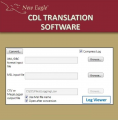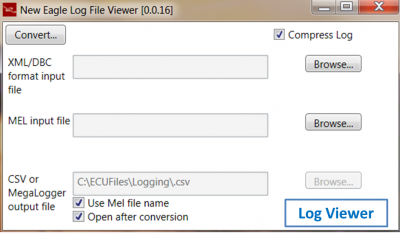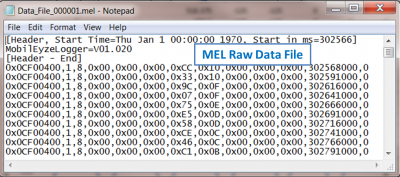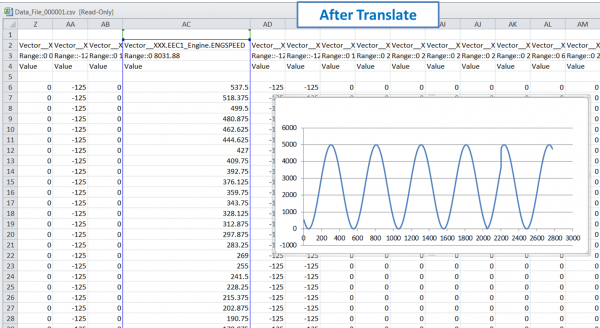Data-Loggers: Difference between revisions
m (moved Data Loggers to Data-Loggers) |
mNo edit summary |
||
| Line 1: | Line 1: | ||
{{DISPLAYTITLE:Data Loggers}} | |||
{{Navigation}} '''Data Loggers''' | {{Navigation}} '''Data Loggers''' | ||
{| | {| | ||
Revision as of 17:42, 9 March 2015
New Eagle > Products Wiki > Data Loggers
IntroductionNew Eagle offers 3 embedded data logger solutions which both provide the capability for event data recording, and vehicle / system monitoring at a reasonable cost. VeeCAN Data LoggersVeeCAN 320 DataloggerThis logger utilizes a USB 2.0 stick for data storage and effortless data retrieval. Two CAN channels are provided, preconfigured to 250K and 500k, with logging at rates up to 1ms to make this device is an ideal choice for most CAN bus environments. While the unit can function without user intervention, an interface button is provided to allow for multiple logging sessions. This data logging device can survive in the harshest environments due to its robust components.
VeeCAN 320 Light DataloggerWhile Sacrificing the standard VeeCAN 320 analog inputs, the VeeCAN 320 light is still a capable Datalogger designed with affordability in mind. The VeeCAN 320 Light still maintains the standard VeeCAN 320's Durable design and useful user interface button as well as on of its CAN channel and its USB port. Moreover, The VeeCAN 320 light is usable with New Eagle's Raptor VeeCAN 320 datalogging library which allows rapid implementation of datlogging capability.
Discontinued DataloggersLow-Cost CAN Data Logger
Data Logger Translation SoftwareNew Eagle offers translator software for both the CAN data logger and the VeeCAN 320 data logger that translates the MEL raw CAN format on USB stick/SD card into engineering values using a DBC file. Also, this translator software can translate CANKIng format data. You can purchase it immediately on our web store or request a trial from contact us.
How To Use It:
This software is easily to use, open it, use "Browse" to choose DBC file and data file (.MEL or .txt), respectively, then click "Convert". After a few seconds, the MEL raw data will be translated into engineering values.
|






